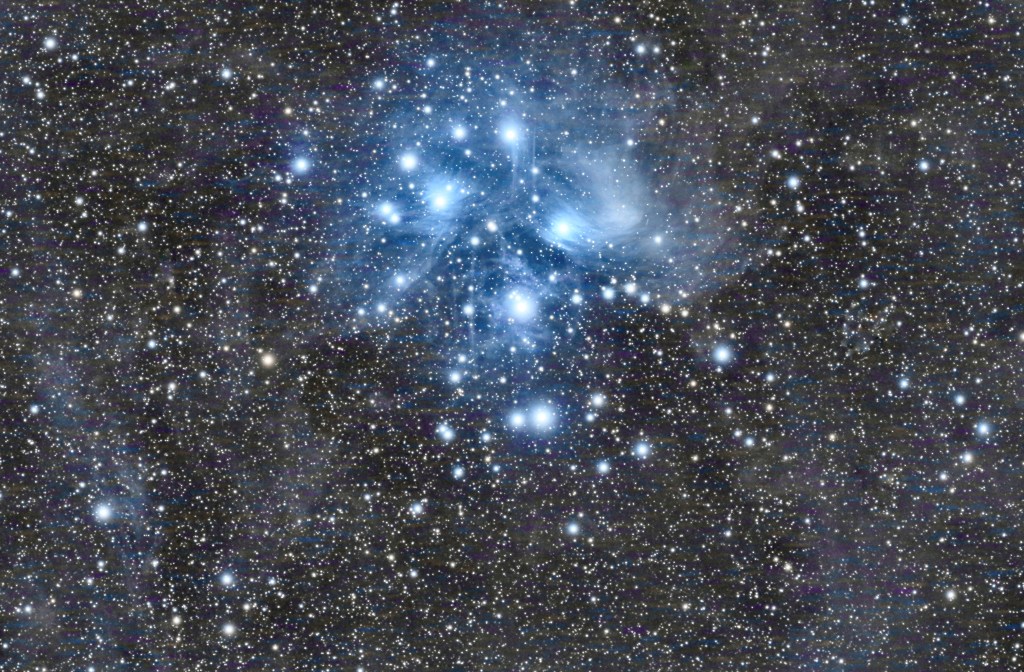Santa Barbara Astrophotography Whiz Kid Recognized by Royal Greenwich Observatory
Dos Pueblos Junior Winslow Barnwood Wins Award for Image of Andromeda Galaxy

It was at the ripe old age of 14 that Winslow Barnwood got the astronomy bug, and it was only a year later that he captured two deep-space images that just earned him major recognition from the Royal Greenwich Observatory during its annual astrophotography competition for young stargazers.
Barnwood, a junior at Dos Pueblos High School and a member of the Santa Barbara Astronomical Unit (SBAU), received the 3rd place “Highly Commended” distinction for his image “Collision Course!” of the Andromeda Galaxy. His “Awash in Blue Starlight” photo of the Pleiades star cluster was among the finalists. Both were taken using equipment he bought himself from working at the Santa Barbara Rock Gym.
We caught up with Barnwood by email this week. More of his recent work can be seen on his Instagram feed ― @rooftop.astro.
Get the top stories in your inbox by signing up for our daily newsletter, Indy Today.

“Collision Course!” — Andromeda Galaxy | Credit: Winslow Barnwood 
“Awash in Blue Starlight” — Pleiades Star Cluster | Credit: Winslow Barnwood
What first got you into astrophotography?
It was the summer of 2018, and Mars was at opposition (the closest it will come to Earth in its orbit). I decided to try and see it with a pair of binoculars I had, and even though all I could see was a tiny red speck, it was enough to hook me. I knew I wanted to go bigger. I started looking at telescopes and going to outreach events with the SBAU. It was during this time that I came across an image of the Heart and Soul nebulae. I realized then that astrophotography was a way to share with other people just how incredibly abstract and beautiful astronomical objects can be.
How do you choose what to shoot?
As the seasons change, so does what is visible in the sky. This is the first deciding factor. Most of the time, my inspiration will then come from fellow astrophotographers. I follow many astrophotography accounts on Instagram and spend lots of time on websites such as AstroBin and Cloudy Nights. Oftentimes, I’ll see an image and decide I either want to replicate it or try a new take. If I’m feeling really creative, I will open a map of the night sky and spend time scrolling around, looking for an interesting part that often goes unphotographed.
What does it take for you to get these amazing shots?
I use three main pieces of gear: a camera, a telescope, and a mount. The camera takes a series of pictures over the course of the night. Then I stack all of them together using software to make dim objects brighter and reduce digital noise. From there, I edit the pictures in a program called PixInsight to achieve the final result. This is a vastly simplified description, as it takes hours to set up each night and even more hours to gather data, with some images requiring multiple days’ worth of data.
How did it feel to be commended by the Royal Greenwich Observatory?
While I believe that astrophotography is its own reward and needs no outside approval, being recognized by a scientific organization was an incredible feeling. I’ve spent hundreds of hours trying to improve, and having other people say that all my hard work has yielded something of worth was incredible. It also spurred me to push even harder in my attempts to create better, more creative views of the night sky.
Every day, the staff of the Santa Barbara Independent works hard to sort out truth from rumor and keep you informed of what’s happening across the entire Santa Barbara community. Now there’s a way to directly enable these efforts. Support the Independent by making a direct contribution or with a subscription to Indy+.




You must be logged in to post a comment.